Hair salon business plan template + PDF
This article presents a model business plan for a hair salon, providing a comprehensive structure to assist you in setting up and running your salon. It is important to note that the names and figures used in this template are fictional, created for demonstration purposes. However, they can be tailored to fit the unique requirements and circumstances of your own hair salon business.
Additionally, for ease of use and customization, a hair salon business plan sample pdf is available for download. This article serves as an invaluable tool for entrepreneurs who are keen on developing a robust and practical strategy for launching or growing their hair salon, providing a clear roadmap and comprehensive insights into the industry.

How this hair salon business plan sample was created
Obtain your tailor-made hair salon business plan easily by clicking on 'Get your business plan' . This simple process involves answering a series of questions about your salon, giving key insights into your business. Our sophisticated AI will then craft a detailed business plan, customized to your specific objectives. It is a quick procedure, taking only 5-10 minutes, and you'll have a well-structured plan at your fingertips. This system's adaptability allows you to modify the plan to suit your unique vision. Once you're satisfied, you can save the plan directly to your computer, providing a clear and accessible path to success for your hair salon.

Hair salon business plan sample
Executive summary, business description, market research and analysis, swot analysis.
- Organizational Structure and Management Team
Products or Services
Marketing and sales strategy, operations plan, financial projections, risk analysis.

Curl Me Crazy is strategically positioned within the thriving hair salon industry. Our mission is to create the latest trendy and unique hairstyles that will appeal to young adults and professionals who are our target market.
As an up-and-coming small business with ambitions of growth over the next 3-5 years, we start with the goal of breaking even in Year 1 as we build a solid client base and offset initial investment costs. In Years 2-3, we project a steady revenue growth of 15-20% per annum, and by Years 4-5, with an established clientele and expansion plans rolling out, we foresee profit increases of 25-30%. Our long-term goal is to open a second location and further boost our profitability margins.
Despite potential risks such as market competition, economic downturns, customer retention, supply chain issues, staff turnover, and health and safety concerns, Curl Me Crazy has delineated mitigation strategies and contingency plans for each. These include differentiating with unique services and styles, offering diverse and affordable options, focusing on exceptional customer satisfaction, building trade relationships with multiple suppliers, and creating a positive work environment for team members.
Our operations plan targets a trendy, accessible location in a busy urban area. Operating six days a week, we intend to offer extended working hours on weekends. Our team, constituting a Manager, Assistant Manager, multiple Hair Stylists, and a Receptionist, will operate on a rotating shift basis to maximize productivity.
The Curl Me Crazy team, led by Alex Taylor, the owner and Manager, boasts a wealth of experience in both hairstyling and business management. Supported by Assistant Manager Jamie Lee, renowned for her customer relations expertise, and Lead Stylist Chris Morgan, a highly-acclaimed creative genius, the team is poised to deliver exceptional service to our clients.
We offer a wide range of services encompassing custom haircuts, coloring, styling, and hair care products tailored to the latest trends, client preferences, and the current vogue for personalized hair solutions.
Our sales and marketing strategy hinges on maintaining a dynamic social media presence, as well as forging partnerships with local businesses and influencers for cross-promotion. Coupled with offline efforts like local advertising, promotional offers, and the implementation of an easy-to-use online booking system, we aim to capture a dominant market share.
We acknowledge the presence of key competitors like "Stylish Strands Studio" , "Elegant Locks Salon" , and "Modern Mane Hair Boutique" . While these salons offer quality services and boast trendy clienteles, we are confident that our differentiated services, strong operational strategies, and expertise will set us apart.
Curl Me Crazy, envisaged as a leading trendy salon, is ready to make waves in the competitive hair industry. With our strategic planning and market-focused approach, we are betting not just on surviving, but thriving in the market.
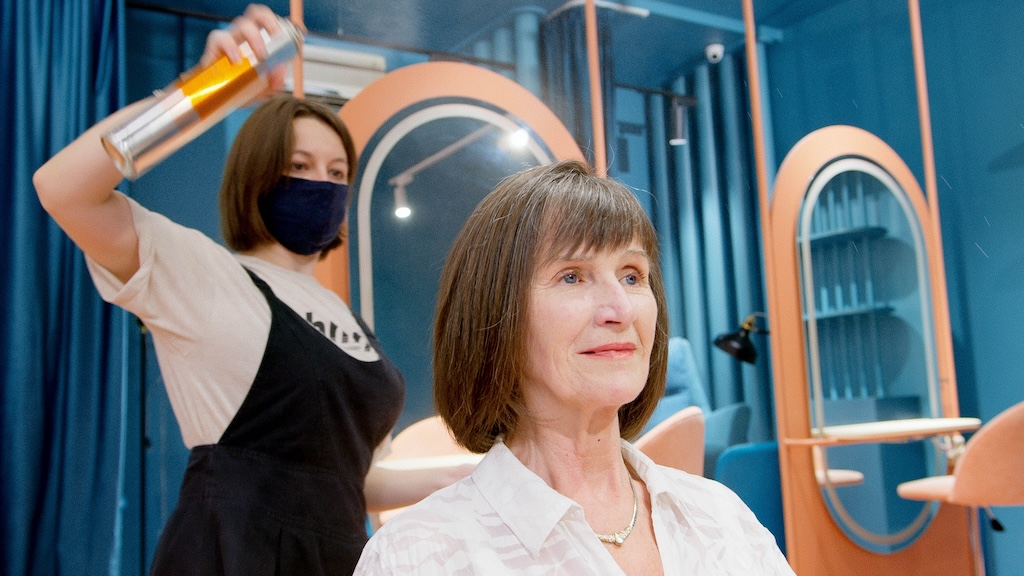
Hair salon business plan sample pdf
Curl Me Crazy, located in the bustling downtown district of New York City, stands as a thriving venture in the beauty and personal care industry. With an emphasis on creative and trend-setting hairstyles, our business aims to become a trailblazer for young adults and professionals seeking unique, standout looks.
The salon was opened in 2020 by its visionary, Alex Taylor. Alex, having nearly a decade of experience in hairstyling and a fervor for the beauty industry, identified a gap in the market for a hair salon catering specifically to more adventurous, fashion-forward clients. His background in business management has complemented and informed the foundations of Curl Me Crazy, steering it towards its current path of success.
Our mission statement is to "inspire individuality and confidence through transformative hairstyling and exceptional service" . We believe that the sphere of hairstyle is not just about cutting and styling hair but serving as a medium for clients to express their personality and style. At Curl Me Crazy, we are committed to providing that opportunity, where each client's individual style and expression is given paramount importance.
The legal structure of Curl Me Crazy is a Sole-proprietorship, with Alex Taylor being the sole owner and operator. This structure not only equates to more straightforward business operations, but it facilitates quick decision-making and a closer relationship with our employees and clients.
Looking at the long-term potential of Curl Me Crazy, we envision ourselves to not be confined to a single salon. The objective is to become a widely recognized and revered brand in the hair salon industry. With the enriched customer experience we provide and our distinct creative edge, we plan to expand our operations to multiple locations across the nation, fostering a network of satisfied and loyal clients.
Financially, we anticipate seeing substantial growth. As we strategize to expand our client base and motivate employee performance, we expect the business to break even in its first year. Ensuing steady growth over the next 2-3 years promises a positive profit margin with an expected annual revenue increase of 15-20%. Further, by the end of the 5th year, with a more established clientele and expansion course laid out, we look forward to seeing a 25-30% growth in our profits. Thus, the longevity of Curl Me Crazy, despite the overwhelmingly competitive market, seems farsighted and plausible.
The beauty and personal care industry is a challenging and ever-evolving landscape. However, the potential it holds for businesses that are eager to innovate and adapt is astronomical. Our commitment to quality service, paired with our relentless pursuit of the trends and demands of the market, fuels our belief that Curl Me Crazy holds the promise to make a mark on this thriving industry.
Salon business plan
Curl Me Crazy is entering the burgeoning hair salon industry, set to make waves with its unique, trendy, and creative hairstyles that target young adults and professionals. The industry is currently valued at $47 billion and is expected to grow at a compound annual growth rate (CAGR) of 1.2% over the next five years.
I. Industry Description
The hair salon industry evolves continually with fashion and pop culture trends, necessitating businesses to stay abreast of the latest styles and techniques. Technological advancements have also influenced businesses, with many establishing digital platforms to expand their reach, streamline operations, and anticipate customer preferences, reflecting the industry's adaptiveness.
II. Target Market
Our target demographic comprise age groups of 18-35, primarily reach college students, young professionals, and trend conscious individuals. As per the census data, this demographic attributes to a population size of approximately 1 million individuals in the city, suggesting a massive potential customer base for our business.
III. Market Needs and Demands
Today's customers seek more than a haircut; they desire experiences and personalized services that cater to their unique style preferences and hair health needs. Additionally, they appreciate convenience in service, evidenced by the growing preference for online booking systems, hinting at the need for innovative service delivery modules.
IV. Market Trends and Patterns
Salons embracing sustainable practices are increasingly favored, representing a shift towards environmentally-friendly products and practices. Also evident is an increasing interest in natural and organic hair care products, suggesting demand patterning around health-conscious products.
V. Competitor Analysis
Key players include "Stylish Strands Studio" , "Elegant Locks Salon" , and "Modern Mane Hair Boutique" . These salons have widespread recognition and a loyal customer base, owed to their service quality and trend-driven styles. However, their offerings have slight premium pricing and lack the personalization we offer.
VI. Potential Barriers to Entry
High setup costs, intensive competition, and the necessity for skilled professionals are significant barriers to entry. However, by leveraging competitive pricing, unique service delivery, and exceptional customer service, we aim to differentiate ourselves in the competitive landscape.
VII. Financial projections
Given our unique value proposition and the robust market potential, we expect to break even in our first year. Over the following two years, we foresee a revenue growth of 15-20% per annum. By our fifth year, leveraging an established clientele, we anticipate profits to increase by 25-30%.
VIII. Contingency Plan
In the event of unforeseen challenges, such as economic downturns or market competition, we plan to diversify services, implement affordable options, and regularly analyze market trends to stay competitive.
In conclusion, with effective segmentation, a differentiated offering, and a strong understanding of market patterns, Curl Me Crazy is poised for success in the bustling hair salon industry.
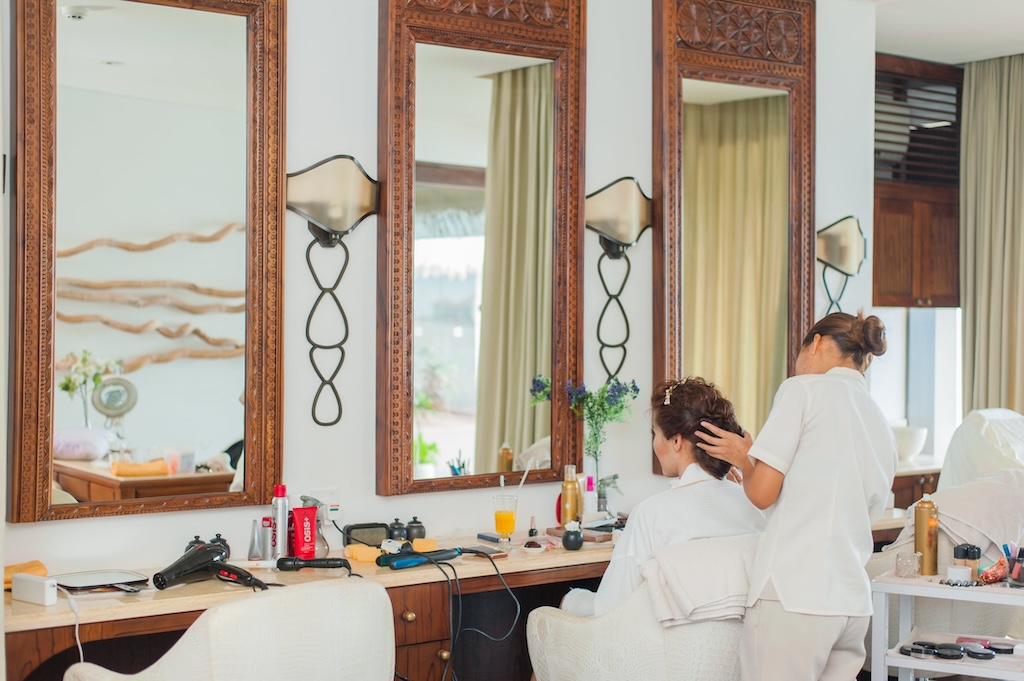
Hair salon business plan
Organizational structure and management.
As a small business aspiring to make a big impact, Curl Me Crazy is organized in a streamlined hierarchy that encourages both individual accountability and collaborative teamwork. At the top is Alex Taylor, the owner and manager, whose vision and tenacity guide all aspects of the business. With a decade of experience in hairstyling and a certification in business management, Alex is instrumental in navigating the industry trends, financial management, customer service, and the overall running of the salon. Supporting Alex is Assistant Manager, Jamie Lee. With five years of salon experience, Jamie's role involves overseeing day-to-day operations, scheduling, and client relationship management. The salon also has a lead stylist, Chris Morgan, who brings creative flair with his distinguished hair designs and eight years of industry experience.
Curl Me Crazy currently operates with a team of ten individuals, including the management. The staffing needs are slated to grow as the business expands. We envision hiring three more full-time stylists, a full-time receptionist, and two part-time assistants by the end of year two. All future hires will be local to minimize commute times and to support the local economy.
The company operates with a robust human resources policy that encompasses competitive compensation, clear protocols for performance reviews, open communications, and opportunities for career development. We strive to create a positive work environment that values mutual respect, diversity, and an enduring commitment to our clients' satisfaction. Our practices abide by all employment laws and regulations, ensuring an equitable work environment.
At present, Curl Me Crazy does not engage external advisors or consultants. However, we continue to reassess this as we grow. We consider the integration of an Advisory Board consisting of experienced individuals from different industry backgrounds for strategic guidance, is a long-term possibility.
In conclusion, Curl Me Crazy leverages a focused organizational structure that's calibrated for efficiency, success, and growth. Backed by a dedicated team, clear HR policies, and a commitment to hiring local talent, we are confident to meet the set business targets and emerge as a popular name in the salon industry.
Beauty salon business plan
Curl Me Crazy is a forward-thinking hair salon business strategically situated in the heart of New York. Our services primarily include customized haircuts, bespoke coloring services, advanced hairstyling as per the latest trends, and a variety of hair care products. We specialize in delivering personal attention to each client and working with them to create a unique hairstyle that aligns with their personal style and needs.
Our competitive edge in the market stems from the exceptional array of innovative services we offer, coupled with our high-level skills and meaningful client-stylist relationships. Unlike many of our competitors, every client at Curl Me Crazy receives a detailed consultation before any services are performed. This consultation, during which stylists understand client's lifestyle, hair texture, faces structure, and personal style, helps us create customized, flattering looks that can be easily recreated by clients at home.
Curl Me Crazy is currently in its first year of operations but has shown promising growth thus far. Backed by a solid business plan and a feasible financial model, we aim to break even by the end of the first year and gradually increase our revenue by 15-20% per year over the next three years.
Regarding intellectual property, we have registered the salon’s brand name – "Curl Me Crazy" - as a trademark to protect it from unauthorized use. We also respect copyright laws and use only licensed or custom-created music in our salon.
The production process for our hair services can be divided into four main stages: consultation, recommendation, execution, and homecare advice. Each stage is meticulously carried out by our certified and experienced stylists who strive to exceed client expectations.
At Curl Me Crazy, we recognize the importance of using high-quality professional hair care products to deliver brilliant results. We source our products from reliable suppliers who offer eco-friendly and cruelty-free products. We have established relationships with three main suppliers - L'Oréal Professionnel , Redken, and Aveda - to ensure a consistent supply of the highest quality hair care products.
In conclusion, Curl Me Crazy is a dedicated hair salon business with a focus on building a reputation as the destination for personalized and creative hair care services. With our defined path for growth and commitment to service excellence, we are geared up to make a difference in the hair salon industry.
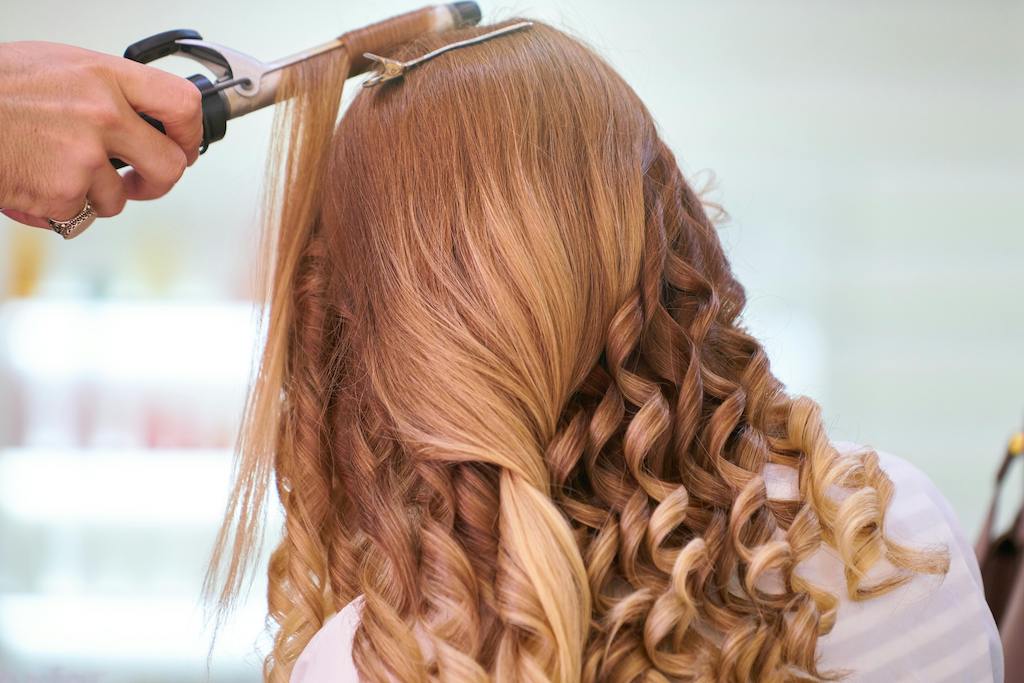
Hair salon business plan pdf
Marketing Strategy
Riding on the back of digital advertising, Curl Me Crazy will deploy a well-strategized digital marketing campaign majorly on Instagram and Facebook due to their wide user-base and marketplace feature. These platforms will be utilized for showcasing our work, including before and after transformations, tutorials, products, and reviews.
Sales Strategy
Our sales strategy is centered on relationship marketing. We will nurture strong relationships with our customers by understanding their preferences and delivering personalized service each time they visit our center.
To guide this process, we are investing in the deployment of a Customer Relationship Management (CRM) system for managing appointments, custodial of customer records and preferences, recall mechanism, and tracking client visit frequency.
Training would be provided for all staff members to comprehend our personalized approach towards sales and ensure uniformity across the team.
Pricing Strategy
Our pricing will be positioned at a medium-high level. We will aim to deliver a premium service experience, maintaining quality at all times to match our pricing. To ensure our services are accessible to varied customers, we will also introduce various bundles and packages, which will offer cost savings to the customers.
Distribution Channels
The primary distribution channel for our service delivery will be our salon. In addition to walk-in customers, we will offer an online appointment feature on our webpage and app. We will also explore partnerships with other beauty service apps, extending our reach.
Promotion and Advertising
Initial promotional activities will be concentrated on drawing customers to our salon. We will offer a 20% discount for first-time customers and a referral program that provides a 10% discount if an existing customer refers a new one. Advertising would be carried out through local newspapers, digital platforms, and billboard promotions.
Customer Service Policies
We operate on a 'Customer First' principle. Our front desk will be trained to address customer needs proactively and promptly. For any service-related complaints, we will offer a free corrective service or a service voucher as a remedy. We will also solicit customer feedback after each appointment to understand opportunities for improvement. Our aim is to drive customer satisfaction, retention, and word-of-mouth referrals.
Curl Me Crazy is poised to disrupt the hair salon industry by seamlessly blending high-quality, personalized services with an innovative operational workflow. Our primary objective is to offer trendy, creative hairstyles for young adults and professionals in a welcoming, relaxed, and efficiently run environment.
- Operational Workflow: Our salon operates six days a week, following a dual shift system that ensures efficient and uninterrupted salon service. The staff rotation involves working in two shifts, with five stylists covering each shift. The first shift starts at 10:00 am and ends at 3:00 pm, and the second shift runs from 3:00 pm to 8:00 pm. Our peak hours, from 5:00 pm to 8:00 pm, will be catered to by all the stylists sharing the workload. This ensures continuous service without overwhelming the employees.
- Production or Service Delivery Processes: As a salon, our core service delivery process involves three steps: appointment, service, and payment. An online booking system integrated into our website and mobile app facilitates client appointments, ensuring that service timing preferences are met accurately and avoiding unnecessary waiting times for clients. Outstanding customer service is our driving force, guaranteed through highly experienced employees consistently delivering trendy and unique hairstyles.
- Quality Control Measures: We prioritize the highest standards of customer satisfaction combined with stringent quality control measures. We conduct regular training workshops where our stylists are updated on the latest trends and techniques. All our employees have met rigorous criteria for their roles, ensuring quality, creativity, and precision in the services delivered.
- Inventory Management: Our salon performs regular inventory checks, ensuring that we never run out of essential products. We also employ a professional inventory management system that triggers an alert when any product reaches its reorder level. This keeps our salon adequately stocked at all times.
- Supply Chain Management: We source hair care products from multiple reliable suppliers to prevent any potential disruption in our supply chain. In the event of delivery delays from one supplier, we always have an alternative to fall back on.
- Facilities and Equipment Needs: Ensuring our salon's neat and welcoming atmosphere demands functional facilities and up-to-date equipment. These include but aren't limited to high-quality salon chairs, professional-grade hair dryers, washing stations, state-of-the-art styling equipments, and a comfortable waiting area for clients. Regular maintenance and timely upgrades are planned to ensure the premises remain at par with current standards.
In conclusion, Curl Me Crazy's solid operations plan is designed to facilitate smooth daily operations and exceptional customer satisfaction, spelling out sure success for the salon in the challenging hair industry.
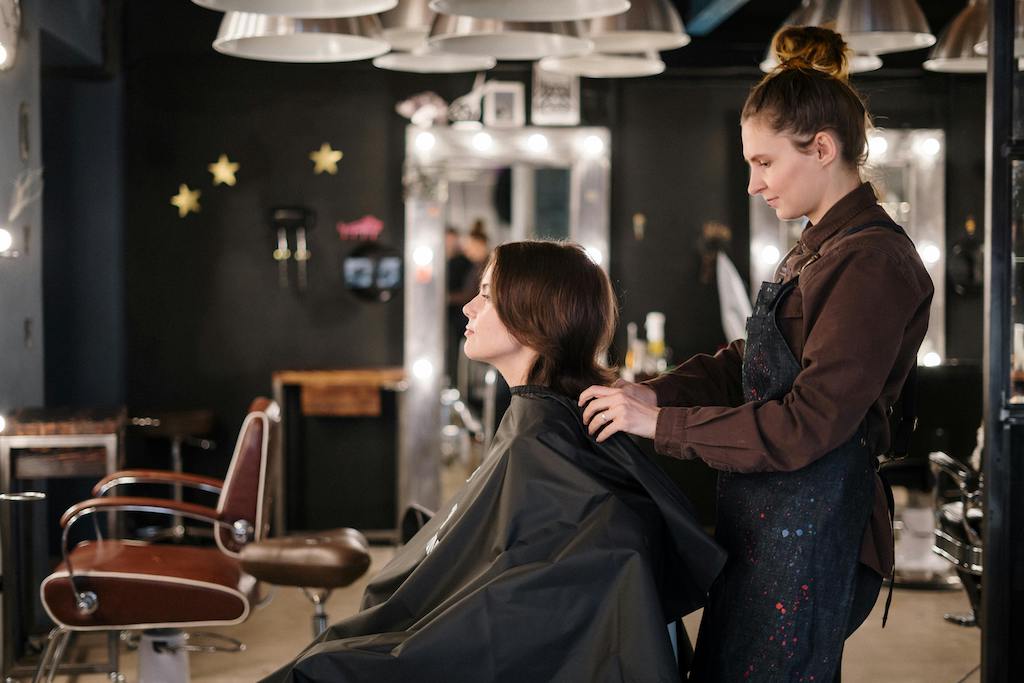
Business plan for hair salon
At Curl Me Crazy, financial integrity is as important as the creative hairstyles we conjure. This section will outline our financial projections, including sales forecast, profit and loss projection, cash flow forecast, balance sheet projection, break-even analysis, and key financial assumptions.
- Sales Forecast: In the first year, we aim for steady growth and recognize this as a crucial period for establishing a strong market presence. We project a monthly revenue of $10,000 that should grow to $20,000 by the end of year one. In the subsequent four years, this is expected to increase steadily, providing us a consistent annual growth rate of approximately 15%.
- Profit and Loss Projection: As investments in marketing, renting, salon setup, and labor costs (salaries and benefits) will form our initial expenditure, we predict a loss in the first quarter. However, we aim to bounce back quickly and expect to start turning a profit by the beginning of the second year with a projection of $50,000. This profit is anticipated to increase year-on-year, reaching $100,000 by the end of year five.
- Cash Flow Projection: We expect positive cash flow starting from the second year of operations. The first year may pose challenges due to an expected lull after the initial setup, but bearing minimum loan expenses and assuming a steady increase in customers, we should be able to maintain adequate cash flow.
- Balance Sheet Projection: Our balance sheet will reflect our growth, with assets increasing progressively with profits and the addition of more salon equipment. Liabilities will reduce over time as loans are paid off, leading to a steady increase in owner’s equity.
- Break-even Analysis: Our break-even point is projected to occur towards the end of the first year. This is based on initial estimations of fixed costs, variable costs, and the average customer spent per visit.
- Financial Assumptions and Considerations: Our financial projections are based on several assumptions, including stable economic conditions, steady client growth, continued relevance of our unique hairstyles, and market price stability for salon supplies. It’s important to note that financial projections can be influenced by a variety of external factors such as economic downturns and increased market competition. To mitigate these risks, we'll allocate funds for contingency and regularly assess our financial strategies to be in line with the market conditions.
In conclusion, with the projected revenue growth and controlled operational costs, Curl Me Crazy is all set to carve a space for itself in the competitive hair salon market while maintaining financial sustainability.
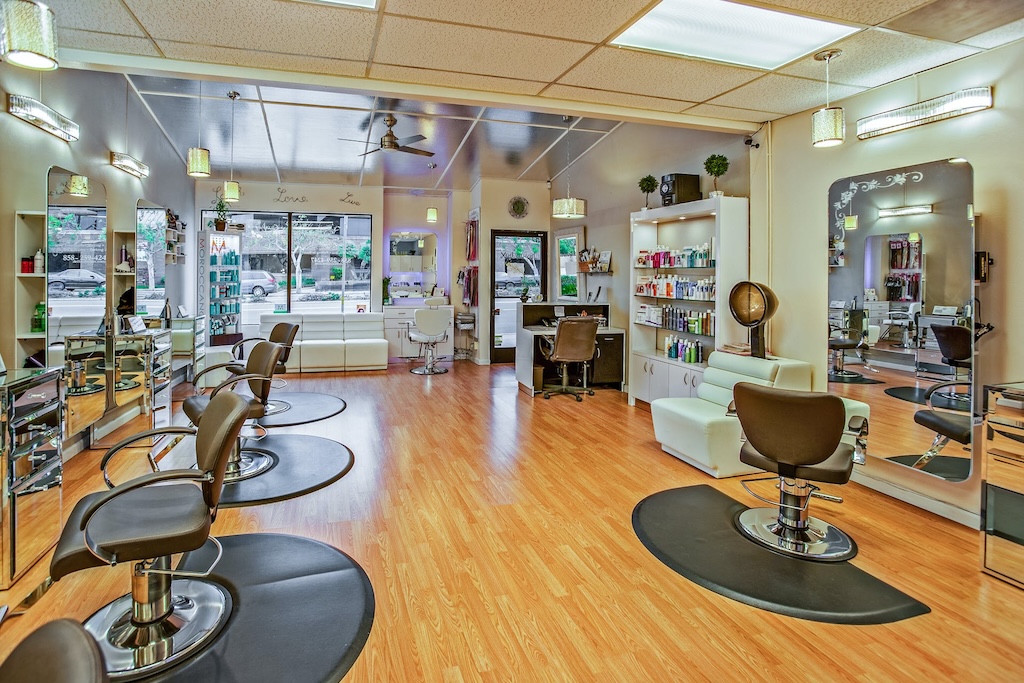
Hairdressing salon business plan
Curl Me Crazy anticipates several potential risks in its journey to being an accomplished hair salon business. However, we also have several mitigation strategies and contingency plans developed to navigate them successfully.
- Market Competition: The salon industry is highly competitive, with new businesses surfacing at many junctures. To rise above the competition, Curl Me Crazy will endeavor to provide unique services bolstered by a diverse range of skillsets our team possesses. Regular market analyses will help us stay tuned with the latest trends and techniques, enabling us in staying ahead of the competition curve.
- Economic Downturns: A sluggish economy could affect our business due to potential reductions in disposable incomes of customers potentially undermining demand. We will counter this by diversifying our services to include low to medium budget options, ensuring we retain clients across various spending capacities.
- Client Retention: Clients are spoilt for choice in our industry, thereby potentially obstructing client retention. We plan to invest in exceptional customer service and satisfaction as our key strategy, supplemented by loyalty programs that secure repeat business and promote referrals.
- Supply Chain Issues: Any disruption in the supply chain can hamper operations, which could be due to various reasons such as logistics issues, stock unavailability, or supplier discounts. As a precautionary measure, we'll establish relationships with multiple suppliers ensuring uninterrupted supply and always maintaining a buffer stock.
- Staff Turnover: Given the creative nature of stylists, one of the challenges we could face is employee retention. Keeping our staff challenged, acknowledged, and satisfied will be vital. We plan to foster a positive work environment with opportunities for personal and professional growth, and regular training to keep them updated with the latest industry trends.
- Health and Safety Concerns: Stringent health and safety regulations govern our industry given its direct relationship with clients' physical well-being. We will adhere to all local and national regulations, keeping staff trained on safety protocols to eliminate any chance of dereliction.
Understanding that risks are inevitable, Curl Me Crazy has in place a robust contingency plan covering all facets of our business. We will establish an emergency fund to cushion against unexpected fiscal challenges, stay connected with the up-to-the-minute industry trends and pivots to keep our business relevant, and most importantly, keep our business model flexible and adaptable based on evolving circumstances.
Our insurance forecast includes extensive coverages that include liability insurance, covering bodily injuries or property damage, workers' compensation insurance to cover medical treatment and disability in case of an employee injury, and property insurance to cover any damage to our business property, lastly, business interruption insurance to cover lost income and continue operating expenses in the event of a disaster causing business disruption.
In the legal area, we will engage with a law firm to guide on all legal compliances required for our salon business. Legal considerations include complying with health and safety laws, employment laws, licensing laws, and applicable tax laws.
In conclusion, while risks are an integral part and parcel of any business, Curl Me Crazy is committed to effectively managing and mitigating any potential pitfalls that may arise along our path. Our comprehensive risk analysis, best practice mitigation strategies, contingency plans, and an all-embracing insurance cover ensure that we stand resilient in the face of any challenge.
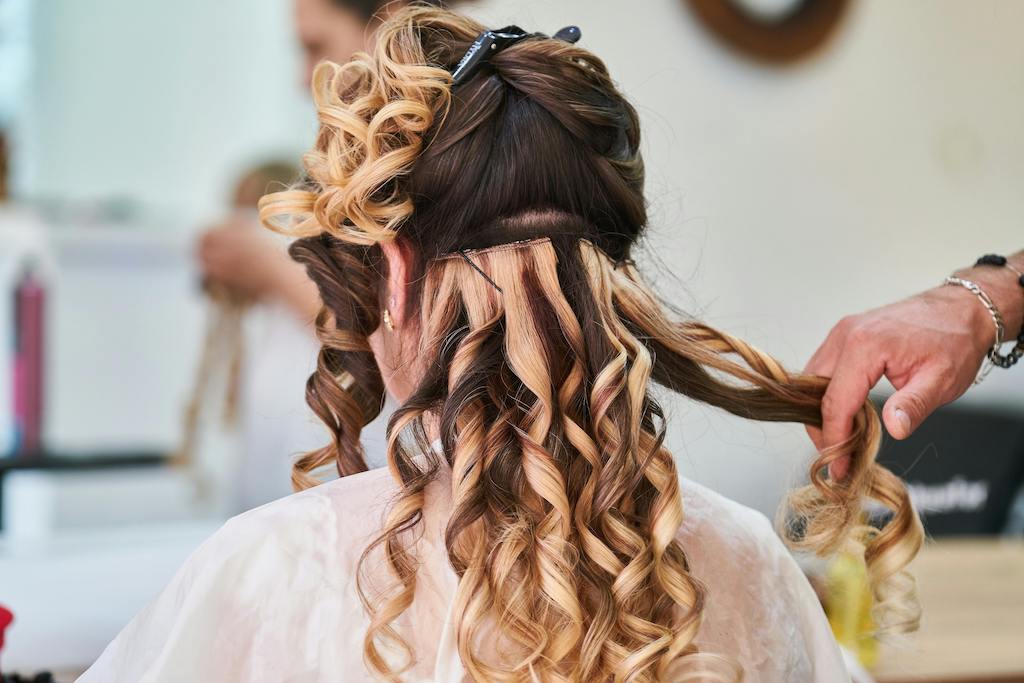
Salon business plan template
More business plan templates.

Bagel shop business plan
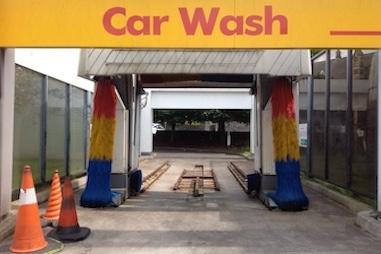
Car wash business plan
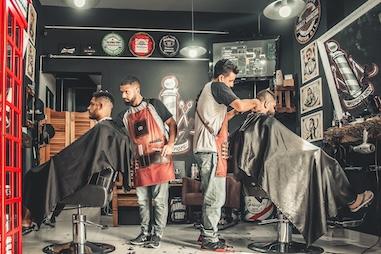
Barber shop business plan

Item added to your cart
Get a full editable business plan for your hair salon business.
Everything you need is already in there!
23 data to include in the business plan of your hair salon business
This article was written by our expert who is surveying the industry and constantly updating the business plan for a hair salon business .
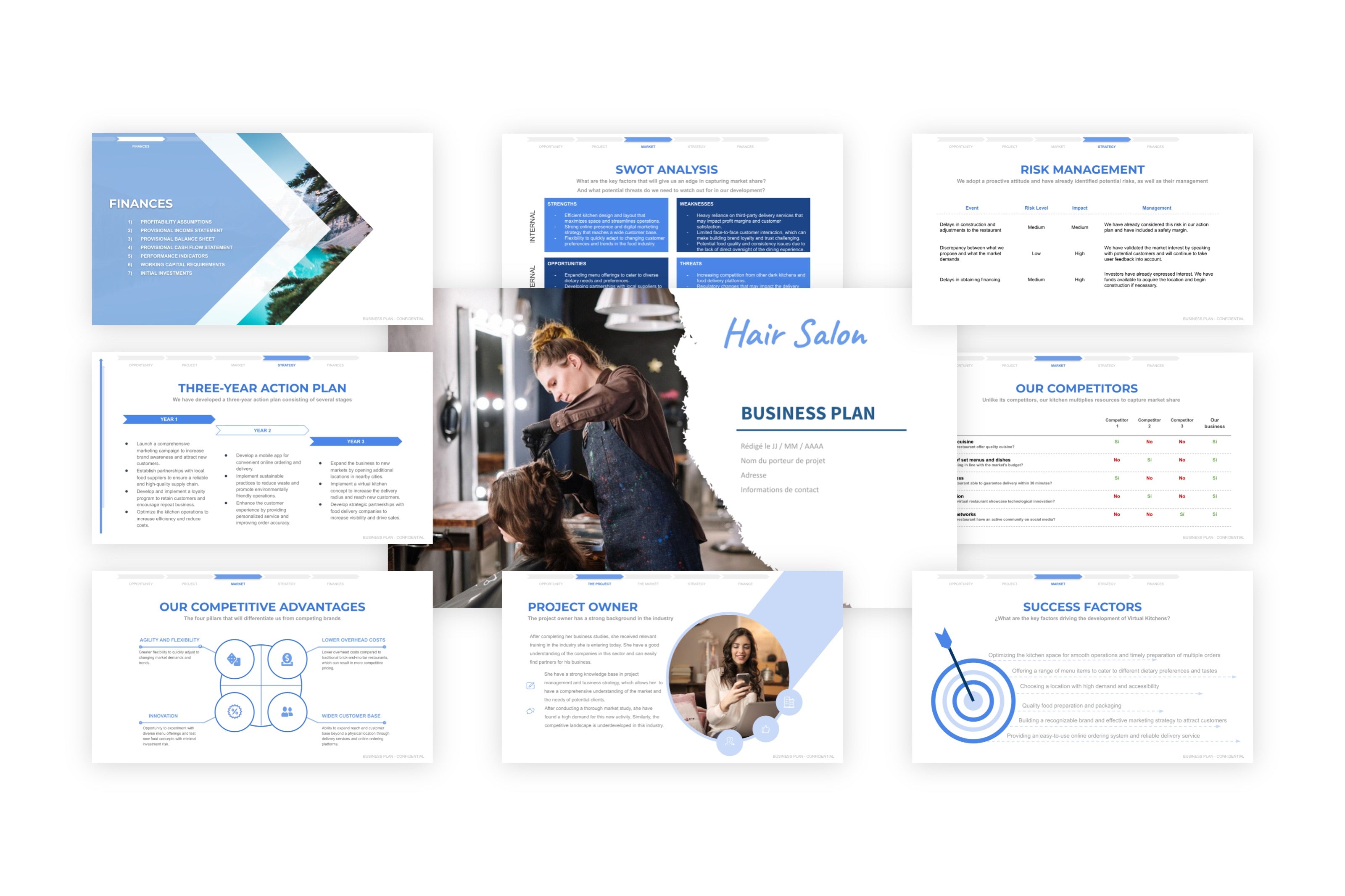
Our business plan for a hair salon business will help you build a profitable project
Ever pondered what the ideal product-to-service ratio should be to ensure your hair salon remains profitable?
Or how many clients need to be scheduled during a bustling Saturday to meet your revenue goals?
And do you know the optimal stylist-to-client ratio for a full-service salon?
These aren’t just interesting figures; they’re the metrics that can determine the success or failure of your business.
If you’re crafting a business plan, investors and lenders will scrutinize these numbers to gauge your strategy and potential for success.
In this article, we’ll explore 23 crucial data points every hair salon business plan needs to demonstrate you're prepared and poised for success.
Stylists' commission should range between 40-60% of service revenue to attract and retain talent
Stylists' commission should range between 40-60% of service revenue to attract and retain talent because it provides a competitive and fair compensation structure that aligns with industry standards.
Offering a commission within this range ensures that stylists feel adequately rewarded for their skills and efforts, which is crucial for maintaining high job satisfaction . This compensation model also helps salons to attract top talent who are looking for opportunities where their hard work is recognized and financially compensated.
However, the exact percentage can vary depending on factors such as the salon's location, clientele, and the level of experience of the stylists.
For instance, salons in high-cost areas might offer a higher commission to account for the increased living expenses, while those with a steady flow of clients might offer a lower percentage but with more frequent opportunities for work. Additionally, more experienced stylists might negotiate a higher commission due to their ability to bring in loyal clients and generate more revenue for the salon.
Salon product sales should account for 15-25% of total revenue to maximize profitability
Salon product sales should ideally make up 15-25% of total revenue because this range helps balance service income with retail profits, enhancing overall profitability.
When a salon sells products, it not only boosts revenue but also strengthens customer loyalty by offering a complete beauty experience. This range ensures that salons are not overly reliant on service income, which can be more variable due to factors like seasonality and client availability.
By maintaining a healthy mix of service and product sales, salons can better manage cash flow and reduce financial risk.
However, this percentage can vary depending on the salon's location, target market, and business model. For instance, a high-end salon in a metropolitan area might see a higher percentage of revenue from product sales due to a clientele that values premium products, while a smaller, local salon might focus more on services to meet the needs of its community.

An average salon turnover rate is around 30-50%, so plan for ongoing recruitment and training costs
The high turnover rate in hair salons, averaging between 30-50% , is a significant factor to consider for business owners.
This turnover can be attributed to several factors, including the competitive nature of the industry and the desire for stylists to seek better opportunities or work environments. Additionally, many stylists are independent contractors , which means they might leave for more flexible or lucrative arrangements.
As a result, salon owners must be prepared for ongoing recruitment and training expenses to maintain a skilled workforce.
However, the turnover rate can vary depending on specific circumstances, such as the salon's location, reputation, and management style. For instance, salons that offer competitive compensation and a positive work culture may experience lower turnover rates, while those in high-demand areas might face more frequent staff changes.
Since we study it everyday, we understand the ins and outs of this industry, from essential data points to key ratios. Ready to take things further? Download our business plan for a hair salon business for all the insights you need.

60% of salons fail within the first three years, often due to poor location choice and cash flow issues
Many hair salons struggle to survive beyond the first three years, with a significant 60% failing, primarily due to poor location choice and cash flow issues .
Choosing the right location is crucial because it affects customer accessibility and visibility , which are essential for attracting clients. A salon situated in a low-traffic area or one with limited parking can deter potential customers, leading to insufficient revenue.
Cash flow problems often arise from underestimating expenses and overestimating income , which can quickly deplete a salon's financial resources.
However, the success rate can vary depending on factors like target market and business model . For instance, salons that cater to a niche clientele or offer unique services may find it easier to thrive despite a challenging location or initial cash flow hurdles.
Salons should aim to reach a break-even point within 12 months to be considered viable
Salons should aim to reach a break-even point within 12 months to be considered viable because it indicates that the business can cover its costs and start generating profit in a reasonable timeframe.
In the hair salon industry, operational costs such as rent, utilities, and staff wages can be significant, so reaching break-even quickly helps ensure these expenses are sustainably managed. Additionally, achieving this milestone within a year demonstrates that the salon has successfully attracted a steady clientele and established a reliable revenue stream.
However, the timeline to break-even can vary depending on factors like location, competition, and the salon's initial investment.
For instance, a salon in a high-traffic urban area might reach break-even faster due to higher customer volume, while a salon in a less populated area might take longer. Moreover, salons that offer unique services or have a strong brand presence might also achieve break-even sooner, as they can attract customers more effectively.
Service profit margins are generally 50-70%, making upselling treatments crucial for profitability
In a hair salon business, service profit margins are typically high, ranging from 50-70% , which makes upselling treatments a key strategy for enhancing profitability.
These margins are largely due to the fact that the cost of labor and products used in services like haircuts and coloring are relatively low compared to the prices charged to clients. By upselling additional treatments, such as deep conditioning or specialized styling, salons can significantly increase their revenue per customer .
However, the actual profit margin can vary depending on factors like the salon's location, the experience level of the stylists, and the types of services offered.
For instance, a high-end salon in a metropolitan area might have higher operating costs, which could lower its profit margins, making upselling even more crucial. On the other hand, a smaller salon in a rural area might have lower overhead costs, allowing for more flexibility in pricing and potentially higher margins without aggressive upselling.

Prime cost (labor and product) should stay below 55% of revenue for financial health
In a hair salon business, keeping the prime cost —which includes labor and product expenses—below 55% of revenue is crucial for maintaining financial health .
Prime costs are a significant part of a salon's expenses, and if they exceed 55%, it can lead to profitability issues . This threshold allows for a healthy balance between covering costs and ensuring there is enough revenue left for other expenses like rent, utilities, and marketing.
When prime costs are kept in check, it provides the salon with the flexibility to invest in growth opportunities and improve service quality.
However, this percentage can vary depending on factors such as the salon's location, the target market , and the level of service provided. For instance, a high-end salon might have higher labor costs due to skilled stylists, but it can offset this with higher pricing, while a budget salon might need to keep costs even lower to remain competitive.
Salons should ideally reserve 1-2% of revenue for equipment maintenance and replacement annually
Hair salons should ideally allocate 1-2% of their revenue for equipment maintenance and replacement annually to ensure smooth operations and avoid unexpected breakdowns.
Regular maintenance helps in extending the lifespan of salon tools, which can be quite expensive to replace, and ensures that the equipment is always in top working condition, providing the best service to clients. By setting aside a small percentage of revenue, salons can plan for these expenses without disrupting their cash flow.
However, this percentage can vary depending on the size and type of the salon, as well as the frequency of equipment use.
For instance, a high-end salon with premium equipment might need to allocate a bit more due to the higher cost of parts and repairs. On the other hand, a smaller salon with less frequent usage might find that 1% is sufficient to cover their needs.
A successful salon should aim for a client retention rate of at least 70%
A successful salon should aim for a client retention rate of at least 70% because it indicates a strong level of customer satisfaction and loyalty.
When clients return regularly, it not only ensures a steady stream of revenue but also reduces the costs associated with acquiring new customers. Retaining clients is generally more cost-effective than constantly seeking new ones, as it involves less marketing and promotional expenses.
Moreover, loyal clients are more likely to refer others, further enhancing the salon's reputation and client base.
However, the ideal retention rate can vary depending on the salon's location, target market, and services offered. For instance, a high-end salon in a competitive urban area might need a higher retention rate to maintain profitability, while a smaller, niche salon in a less competitive area might thrive with a slightly lower rate.
Let our experience guide you with a business plan for a hair salon business rich in data points and insights tailored for success in this field.
Inventory turnover for retail products should happen every 30-45 days to avoid overstock and ensure freshness
In a hair salon business, maintaining an inventory turnover every 30-45 days is crucial to avoid overstock and ensure product freshness.
Hair care products, such as shampoos and conditioners, can lose their effectiveness over time, so it's important to keep them fresh for optimal results. Additionally, having a high turnover rate helps in minimizing the risk of products becoming outdated or less appealing to customers.
However, the ideal turnover rate can vary depending on the specific products and customer demand.
For instance, specialty products like hair treatments or color-specific shampoos might have a slower turnover due to their niche market. On the other hand, high-demand items like basic shampoos and conditioners should be restocked more frequently to meet customer needs and maintain consistent sales .

It's common for salons to lose 2-4% of revenue due to product shrinkage or theft
It's common for salons to lose 2-4% of revenue due to product shrinkage or theft because of the nature of the business and the products involved.
Hair salons often stock a variety of high-value products like shampoos, conditioners, and styling tools, which can be tempting targets for theft. Additionally, the busy and sometimes chaotic environment of a salon can make it difficult to monitor every product, leading to unintentional shrinkage through misplacement or accidental damage.
Moreover, the frequent handling of products by multiple staff members increases the risk of internal theft , as it can be challenging to track who is using or taking what.
However, the extent of revenue loss can vary depending on factors such as the size of the salon and the effectiveness of its inventory management systems. Smaller salons might experience less shrinkage due to a more controlled environment, while larger salons with more staff and clients might face greater challenges in preventing theft and managing inventory.
A salon's rent should not exceed 10-15% of total revenue to avoid financial strain
A salon's rent should ideally be kept between 10-15% of total revenue to maintain financial health.
When rent exceeds this percentage, it can lead to financial strain as it reduces the funds available for other essential expenses like staff salaries, supplies, and marketing. Keeping rent within this range ensures that the salon can invest in growth and maintain a buffer for unexpected costs.
However, this percentage can vary depending on the salon's location and target market.
For instance, a salon in a high-traffic area might justify a higher rent percentage due to increased customer flow and higher service prices. Conversely, a salon in a less competitive area might need to keep rent lower to remain profitable, as it may not have the same pricing power or customer volume.
Upselling during peak hours can increase average ticket size by 15-25%
Upselling during peak hours in a hair salon can significantly boost the average ticket size by 15-25% because clients are already in a spending mindset and more open to additional services.
During these busy times, clients often have to wait, which provides an opportunity for stylists to suggest additional treatments like deep conditioning or hair glossing. Moreover, the salon atmosphere is usually more vibrant and engaging, making clients more receptive to trying new products or services.
However, the effectiveness of upselling can vary depending on the client's preferences and the stylist's ability to communicate the benefits of the additional services.
For instance, a regular client who trusts their stylist might be more inclined to try a new service, while a first-time visitor might be more cautious. Additionally, the success of upselling can also depend on the time constraints of the client, as those in a hurry may decline any extra services regardless of the benefits.
The average profit margin for a salon is 8-10%, with higher margins for express services and lower for luxury services
The average profit margin for a salon is typically between 8-10% because of the balance between service costs and pricing strategies.
Express services, like quick haircuts or blowouts, often have higher profit margins because they require less time and fewer resources to perform. On the other hand, luxury services, such as elaborate coloring or treatments, tend to have lower profit margins due to the higher cost of materials and the time-intensive nature of these services.
In specific cases, a salon's location and clientele can significantly influence these margins.
For instance, a salon in a high-end area might charge more for luxury services, potentially increasing their profit margin despite higher costs. Conversely, a salon in a more budget-conscious area might focus on express services to maintain profitability, leveraging volume over individual service profit .
Average ticket size should grow by at least 3-5% year-over-year to offset rising costs
In a hair salon business, the average ticket size should grow by at least 3-5% year-over-year to offset rising costs because expenses such as rent, utilities, and product supplies tend to increase annually.
Without this growth, the salon might struggle to maintain its profit margins , which could lead to financial instability. Additionally, increasing the average ticket size helps to cover the costs of staff wages and potential investments in new equipment or services.
However, the rate at which the average ticket size needs to grow can vary depending on the salon's location and target market.
For instance, a salon in a high-demand urban area might need to increase prices more aggressively due to higher operational costs . Conversely, a salon in a smaller town might have more flexibility, as their cost structure could be lower, allowing for a more modest increase in ticket size.
With our extensive knowledge of key metrics and ratios, we’ve created a business plan for a hair salon business that’s ready to help you succeed. Interested?
Ideally, a salon should maintain a current ratio (assets to liabilities) of 1.5:1
In the hair salon business, maintaining a current ratio of 1.5:1 is considered ideal because it indicates a healthy balance between assets and liabilities, ensuring the salon can meet its short-term obligations.
This ratio means that for every dollar of liabilities, the salon has $1.50 in assets, providing a cushion to cover unexpected expenses or downturns in business. A ratio lower than 1.5 might suggest that the salon could struggle to pay its bills, while a much higher ratio could indicate that the salon is not effectively using its assets to grow the business.
However, this ideal ratio can vary depending on specific circumstances, such as the salon's size, location, and business model.
For instance, a small salon in a competitive area might need a higher ratio to ensure it can weather periods of low customer turnout. Conversely, a well-established salon with a steady client base might comfortably operate with a slightly lower ratio, as it has more predictable cash flow.
Effective service menu engineering can boost revenue by 10-20% by highlighting high-margin services
Effective service menu engineering can significantly boost a hair salon's revenue by 10-20% by strategically highlighting high-margin services .
By carefully designing the menu, salons can draw attention to services that offer the best profit margins, such as premium hair treatments or specialized styling . This not only encourages clients to choose these options but also helps in maximizing the salon's overall profitability.
Additionally, a well-structured menu can simplify decision-making for clients, making them more likely to opt for higher-value services .
However, the impact of menu engineering can vary depending on factors like the salon's target clientele and location . For instance, a salon in a high-end area might see a greater increase in revenue by promoting luxury services, while a salon in a more budget-conscious area might benefit from highlighting affordable yet profitable options.
A salon should have 1-1.5 square meters of workspace per stylist to ensure efficiency
A salon should allocate 1-1.5 square meters of workspace per stylist to ensure they can work efficiently and comfortably.
This space allows stylists to have enough room for their tools and equipment, which is crucial for maintaining a smooth workflow . Additionally, it helps in minimizing the risk of accidents or disruptions, as stylists won't be bumping into each other or their clients.
However, the exact space requirement can vary depending on the specific services offered by the salon.
For instance, salons that provide more extensive services like hair coloring or treatments may need more space per stylist to accommodate additional equipment and supplies. On the other hand, a salon focusing on quick haircuts might manage with slightly less space, as the service demands are different.
Client satisfaction scores can directly impact repeat business and should stay above 85%
Client satisfaction scores are crucial for a hair salon because they directly influence the likelihood of customers returning for future services.
When satisfaction scores are above 85% , it indicates that the majority of clients are happy with their experience, which fosters customer loyalty and encourages them to come back. Repeat business is essential for a salon's financial stability and growth, as acquiring new clients often costs more than retaining existing ones.
However, satisfaction scores can vary based on factors like the quality of service provided, the skill level of the stylists, and the overall salon environment.
For instance, a client who receives a haircut that exceeds their expectations is more likely to rate their experience highly and return. On the other hand, if a client feels their stylist didn't listen to their preferences, their satisfaction score might drop, impacting their decision to revisit the salon.
Salons in high-density areas often allocate 2-4% of revenue for online booking and marketing platforms
Salons in high-density areas often allocate 2-4% of revenue for online booking and marketing platforms because these tools are crucial for attracting and managing a large customer base.
In bustling urban environments, the competition among salons is fierce, and having a strong online presence can be a significant differentiator. By investing in online booking systems and digital marketing , salons can streamline operations and reach potential clients more effectively.
This allocation can vary depending on the salon's size, target market, and specific business goals.
For instance, a high-end salon targeting affluent clients might spend more on luxury branding and personalized marketing strategies, while a smaller salon might focus on cost-effective social media campaigns. Ultimately, the percentage of revenue spent on these platforms is a strategic decision that reflects the salon's unique needs and market position.
Digital marketing should take up about 5-7% of revenue, especially for new or growing salons
Digital marketing should take up about 5-7% of revenue, especially for new or growing salons, because it helps establish a strong online presence and attract new clients.
For a hair salon, investing in digital marketing is crucial as it allows you to reach a wider audience and showcase your unique services. This percentage of revenue ensures that you have enough resources to create engaging content, run effective ad campaigns, and maintain a professional website.
New or growing salons often need to build brand awareness and customer loyalty, which can be effectively achieved through targeted digital marketing strategies.
However, the exact percentage can vary depending on specific factors such as the salon's location, competition, and target audience. For instance, a salon in a highly competitive urban area might need to allocate more than 7% to stand out, while a salon in a smaller town with less competition might find 5% sufficient.
Prepare a rock-solid presentation with our business plan for a hair salon business , designed to meet the standards of banks and investors alike.
Seasonal promotions can increase sales by up to 20% by attracting repeat customers
Seasonal promotions can boost sales by up to 20% in a hair salon by enticing customers to return more frequently.
These promotions often create a sense of urgency and excitement , encouraging clients to book appointments they might otherwise delay. For instance, offering a discount on hair coloring during the fall can attract clients looking to change their look for the new season.
Moreover, repeat customers are more likely to try additional services, such as a deep conditioning treatment or a new haircut style, when they feel they are getting a good deal.
However, the effectiveness of these promotions can vary based on factors like location and clientele . In areas with a high concentration of salons, unique and well-targeted promotions are crucial to stand out, while in less competitive areas, even simple discounts can be effective.
Establishing a product cost variance below 3% month-to-month is a sign of strong management and control.
Establishing a product cost variance below 3% month-to-month in a hair salon business is a sign of strong management and control because it indicates that the salon is effectively managing its resources and maintaining consistent pricing strategies.
In a hair salon, product costs can fluctuate due to factors like supplier price changes or seasonal demand for certain products. By keeping the variance below 3%, the salon demonstrates its ability to adapt to these changes without significantly impacting its overall financial health.
This level of control suggests that the salon has implemented efficient inventory management practices and has a good understanding of its product usage patterns .
However, the acceptable variance can vary depending on specific cases, such as the size of the salon or the range of services offered. For instance, a larger salon with a more extensive product line might experience slightly higher variances due to complex supply chains , while a smaller salon with fewer services might maintain a tighter control over costs.

- Choosing a selection results in a full page refresh.
- Opens in a new window.
